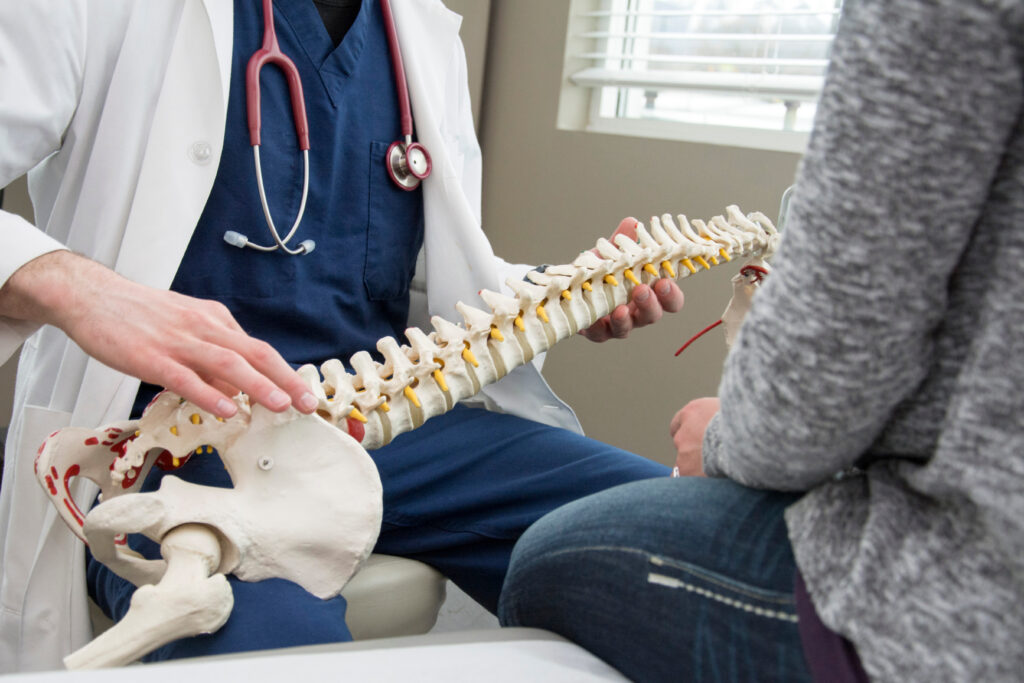The Current Technologies by the Best Spine Surgeons in St Louis MO
The Current Technologies by the Best Spine Surgeons in St Louis MO
Blog Article
A Review of Spine Conditions That Often Cause Surgical Treatments
Spinal column problems such as herniated discs, spinal constriction, and degenerative disc illness often demand surgical interventions when conventional treatments fall short to relieve relentless signs and symptoms. Recognizing the nuances of each condition and the equivalent surgical options, such as discectomy or spine fusion, is important for effective administration.
Herniated Discs
Although numerous people with herniated discs may discover alleviation via conservative treatments, surgical procedure becomes a necessary consideration when signs and symptoms continue or worsen - best spine surgeons in st louis mo. A herniated disc takes place when the soft inner gel of a spinal disc extends through its outer layer, possibly pressing nearby nerves and leading to discomfort, tingling, or weak point in the extremities
Traditional administration usually consists of physical therapy, discomfort medications, and corticosteroid shots, which intend to decrease inflammation and enhance function. Nevertheless, in situations where these approaches stop working to minimize debilitating symptoms, surgical options may be discovered.
One of the most usual operation for herniated discs is a discectomy, which includes the elimination of the herniated section of the disc to alleviate stress on the impacted nerve root. In a lot more severe instances, back combination might be required to support the influenced vertebrae.
Clients are suggested to go over the potential dangers and benefits of surgical procedure with their medical care copyright to make an informed choice. Eventually, the objective of any type of surgical intervention is to restore feature, reduce discomfort, and enhance total quality of life for people experiencing herniated discs.
Spinal Stenosis
Spine constriction takes place when the rooms within the spinal column narrow, causing raised pressure on the spine cord and nerves. This problem can develop in different regions of the spine, consisting of the lumbar and cervical areas, commonly because of age-related adjustments, such as degenerative disc illness, arthritis, or enlarging of ligaments.
Individuals with spine constriction might present with signs that include discomfort, tingling, prickling, or weak point, mostly in the legs or arms. These signs can be aggravated by tasks that entail standing or strolling, usually leading people to seek alleviation through traditional treatments like physical treatment, medicines, or epidural steroid injections.
However, when these non-surgical interventions fall short to provide appropriate relief, surgical choices may be taken into consideration. Common surgical procedures for back constriction consist of laminectomy, which involves the elimination of part of the vertebra to ease stress, and back fusion, which supports the afflicted area. The choice to pursue surgery is commonly based on the seriousness of symptoms, the level of practical disability, and the total wellness of the patient. Trigger medical diagnosis and administration are vital to stop more neurological concession and improve high quality of life.
Spondylolisthesis
Spondylolisthesis takes place when one vertebra slides ahead over another, causing misalignment of the spine. This condition can result from different variables, including congenital problems, injury, or degenerative adjustments in the spine. It is most frequently observed in the back area, especially at the L4-L5 and L5-S1 degrees.

When non-surgical techniques fail to ease symptoms or when significant nerve compression is existing, medical intervention might be required. Surgical alternatives can include spine index combination or decompression procedures, intended at restoring positioning and relieving neurological signs.
Degenerative Disc Illness

Patients with DDD commonly experience pain that might radiate to the arms or legs, depending upon the affected region of the spine. The condition can be identified through a combination of clinical analysis, imaging studies, and patient background. Therapy alternatives normally begin with conservative steps, including physical treatment, pain administration, and lifestyle adjustments. Nevertheless, when these strategies fall short to offer adequate Full Report relief, medical treatments may be considered.
Surgical choices for DDD might include back blend or synthetic disc replacement, focused on stabilizing the influenced segment and easing pain (best spine surgeons in st louis mo). Ultimately, the option of therapy is embellished, taking into consideration the severity of the condition, person health, and way of living aspects
Spine Lumps

Spinal tumors can develop from various variables, including genetic predisposition, ecological influences, and pre-existing clinical conditions. Clients may provide with a range of symptoms, consisting of local discomfort, neurological shortages, weakness, or modifications in bowel and bladder feature, depending on the tumor's size and area.
Surgical intervention might be called for to minimize signs and symptoms, obtain a biopsy, or eliminate the tumor totally. The objective of surgery is typically to unwind neural elements and support the spine. Early discovery and intervention are essential for optimizing results in people with spine lumps.
Verdict
In recap, spinal column problems such as herniated discs, spine stenosis, spondylolisthesis, degenerative disc illness, and spinal tumors often demand surgical treatment as a result of their prospective to trigger substantial discomfort and useful disability. While conventional treatments might use temporary relief, surgical options come to be vital when symptoms continue or get worse. Prompt medical diagnosis and treatment play an important duty in bring back function and improving the top quality of life for damaged people, underscoring the relevance of detailed spine care.

Report this page